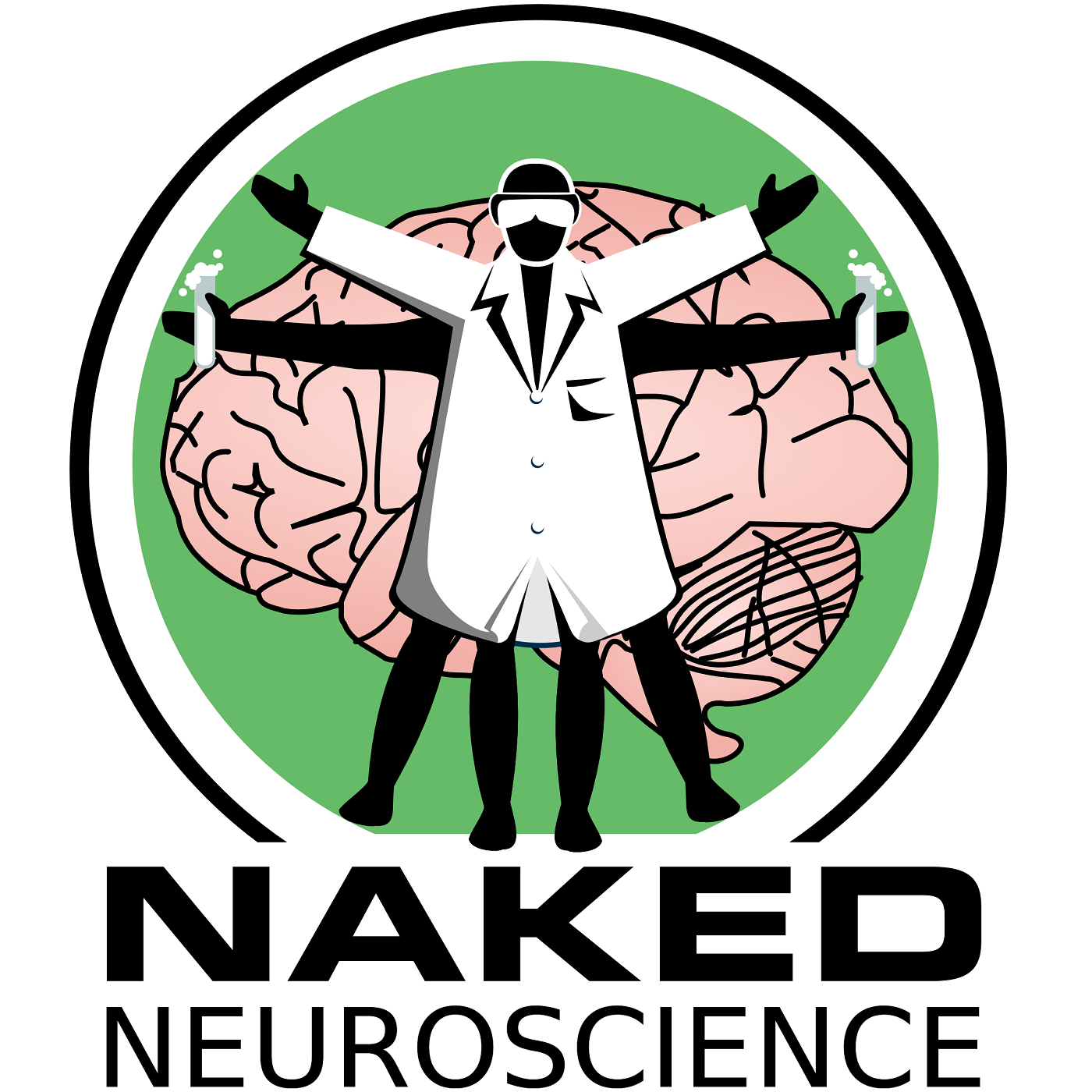
Heliox: Where Evidence Meets Empathy 🇨🇦
Join our hosts as they break down complex data into understandable insights, providing you with the knowledge to navigate our rapidly changing world. Tune in for a thoughtful, evidence-based discussion that bridges expert analysis with real-world implications, an SCZoomers Podcast
Independent, moderated, timely, deep, gentle, clinical, global, and community conversations about things that matter. Breathe Easy, we go deep and lightly surface the big ideas.
Curated, independent, moderated, timely, deep, gentle, evidenced-based, clinical & community information regarding COVID-19. Since 2017, it has focused on Covid since Feb 2020, with Multiple Stores per day, hence a sizeable searchable base of stories to date. More than 4000 stories on COVID-19 alone. Hundreds of stories on Climate Change.
Zoomers of the Sunshine Coast is a news organization with the advantages of deeply rooted connections within our local community, combined with a provincial, national and global following and exposure. In written form, audio, and video, we provide evidence-based and referenced stories interspersed with curated commentary, satire and humour. We reference where our stories come from and who wrote, published, and even inspired them. Using a social media platform means we have a much higher degree of interaction with our readers than conventional media and provides a significant amplification effect, positively. We expect the same courtesy of other media referencing our stories.
Heliox: Where Evidence Meets Empathy 🇨🇦
🧬 Your Gut Microbiome Census Is Lying To You: Why Regulation Matters More Than Population
See the corresponding substack essay and resources
It's 2025, and we're still obsessed with gut microbiome tests that peddle false promises.
They arrive in sleek packages with fancy charts showing the bacterial composition of your gut. They promise personalized insights and dietary recommendations. They claim to unlock the secrets of your digestive universe.
And they're selling you an incomplete story that's bordering on scientific malpractice.
Here's what the $10 billion microbiome testing industry doesn't want you to understand: knowing which bacteria live in your gut tells you surprisingly little about your health. The real story—the one that actually matters—is what those microbes are doing.
Regulation of microbial gene expression: the key to understanding our gut microbiome
This is Heliox: Where Evidence Meets Empathy
Independent, moderated, timely, deep, gentle, clinical, global, and community conversations about things that matter. Breathe Easy, we go deep and lightly surface the big ideas.
Thanks for listening today!
Four recurring narratives underlie every episode: boundary dissolution, adaptive complexity, embodied knowledge, and quantum-like uncertainty. These aren’t just philosophical musings but frameworks for understanding our modern world.
We hope you continue exploring our other podcasts, responding to the content, and checking out our related articles on the Heliox Podcast on Substack.
About SCZoomers:
https://www.facebook.com/groups/1632045180447285
https://x.com/SCZoomers
https://mstdn.ca/@SCZoomers
https://bsky.app/profile/safety.bsky.app
Spoken word, short and sweet, with rhythm and a catchy beat.
http://tinyurl.com/stonefolksongs
Curated, independent, moderated, timely, deep, gentle, evidenced-based, clinical & community information regarding COVID-19. Since 2017, it has focused on Covid since Feb 2020, with Multiple Stores per day, hence a large searchable base of stories to date. More than 4000 stories on COVID-19 alone. Hundreds of stories on Climate Change.
Zoomers of the Sunshine Coast is a news organization with the advantages of deeply rooted connections within our local community, combined with a provincial, national and global following and exposure. In written form, audio, and video, we provide evidence-based and referenced stories interspersed with curated commentary, satire and humour. We reference where our stories come from and who wrote, published, and even inspired them. Using a social media platform means we have a much higher degree of interaction with our readers than conventional media and provides a significant amplification effect, positively. We expect the same courtesy of other media referencing our stories.
Welcome to the deep dive. Today, we're venturing into the intricate world of your gut microbiome. Right. You know, it's teeming with microbes. But here's something really key. Just knowing which microbes are there, it tells a surprisingly little about your actual health. Exactly. And our mission today, really, for you listening, is to unpack why that... microbial senses, just counting who's in your gut, often fall short. The real story, the thing that matters, is what those microbes are doing. Specifically, those compounds they make, the metabolites that influence your health. Precisely. And we've got some cutting edge scientific research to guide us here, highlighting this exact disconnect. Yeah, it really emphasizes that understanding your gut health isn't just about who is living there. It's about how their genes are regulated. So think beyond just a simple headcount. We need to get into the complex rules governing their behavior and what they actually produce. Get ready because we're diving deep. We're going into those hidden controls dictating the gut's metabolic symphony. Okay, let's start with the basics though. It's pretty well established, isn't it, that there's a link between your gut microbes and your health. And it's via these metabolites. Oh, absolutely. That link is undeniable. These compounds, the metabolites, they cover a huge range. You've got short-chain fatty acids feeding your gut lining, other molecules affecting things all over your body. Okay, so we know they matter. But here's where it gets... well, really interesting based on this research. Even though we know this connection exists, the actual mechanisms, how these metabolites get produced in the gut environment, it seems we still don't fully grasp them. It's surprisingly elusive. Yeah. It's like knowing a factory makes something vital. Yeah. but having basically no clue how the machinery works or what flips the on switch. That's a great way to put it. So a lot of current research just looks for correlations, right? Like this microbe is abundant when this metabolite is high. Exactly. And that's given us some starting points, some valuable insights for sure. But the authors here really stress the limitations. Just because microbe X is around when metabolite Y is present, well, it doesn't automatically mean X is making Y. Correlation doesn't equal causation, the classic phrase. You got it. There could just be spurious lengths. You know, coincidence. Or other things going on. Right, like non-genetic stuff. what the microbes have available to eat, substrate availability, or just the general conditions in the gut, like pH. And here's a really crucial point from the paper. Even if a microbe has the genes for a metabolic pathway, the blueprint to make something, it doesn't mean it's actually using that blueprint in your gut at that moment. That's such a critical distinction. The research really hammers this home. The sheer abundance of genes for making something. It doesn't consistently predict the actual amount of that something, that metabolite we find. Which strongly suggests there's another layer of control, something deciding when and how those genes actually get used. Bingo. And that leads us straight to the core argument here. Yeah. The power of regulation, regulating microbial gene expression. how genes are turned on or off, how much protein gets made that's a central but often kind of neglected. Factor in metabolite production in your gut. Okay, let's make that concrete. You used an analogy earlier, like ingredients. Yeah, think of it like this. Your microbiome profile, that list of who's there, it's like your pantry inventory. Just the ingredients. Right. But just having flour, eggs, sugar. That doesn't tell you if you're getting bread or cake, does it? You need the recipe that's like the regulatory mechanisms and the cooking process, temperature, timing. Those are the environmental cues. Both are vital for the final dish, the metabolite. That's a fantastic analogy. It really clicks. Now, the article mentions metatranscriptomics. Right. Analyzing the RNA. Doesn't that get us closer to the recipe part, seeing which genes are active? It's definitely a step forward, yes. Yeah. It looks at gene activity, not just gene presence. So it's closer. But there are challenges. Big challenges, as the article points out. For one, a lot of the RNA transcripts you detect are just for basic housekeeping stuff. Like keeping the lights on. Exactly. Basic metabolism, making proteins, energy... stuff most bacteria do. Not necessarily the specific genes for those fancy health-relevant metabolites we're really interested in. So it's noisy trying to hear one specific instrument in a huge, loud orchestra. That's a good way to think about it. And there's another big hurdle. Microbial messenger RNA, the mRNA, it's really unstable. It degrades quite a bit. Very quickly. The picture could be totally different. That makes total sense. And I bet there are technical hurdles too. Getting enough RNA, filtering things out. Absolutely. You need a decent amount of microbial mRNA, which can be tough to get. Yeah. Then you have to filter out way more abundant stuff like ribosomal RNA, plus any of your own human RNA that's snuck in. And crucially, the article reminds us making a metabolite isn't just about transcription, about making the RNA. Right. You still need trans. Taking the protein from the RNA. Yeah. And then maybe post translational modifications, tweaking the protein after it's made. It's complex. OK, so it's way more intricate than just counting bugs. Yeah. So let's dig into some of those environmental factors then. Diet comes up, obviously. Most people get that diet influences their gut. It's huge. Absolutely. The article touches on how different types of food shape the main fermentation types. Like fiber versus protein. Yeah. Yeah. High fiber tends to push toward sacrolytic fermentation by certain bacteria. That's where you get those beneficial short-chain fatty acids. Acetate, propionate, butyrate. And high protein. Can lean more towards proteolytic fermentation, making metabolites from amino acids. Some good, some potentially less good. That seems fairly logical. Fiber in, SCFA is out, protein in, amino acid stuff out. But the article suggests it's... Well, fuzzier than that. Much fuzzier. One of the really fascinating points is the huge variation between individuals, even on the exact same diet. Really? Yeah. Studies using things like resistant starch or even completely controlled identical diets for everyone show that different people's microbes... produce quite different metabolite profiles from the same input. Wow. So my gut's reaction to that fiber bar might be quite different from yours, even if we have similar-ish microbes. It certainly could be. It strongly suggests other things are going on beyond just the food and the list of microbes. And those other things are likely those gut conditions we mentioned. pH, what other substrates are floating around, how bacteria are interacting. Exactly. The article argues these factors, and especially how they influence gene regulation, are often overlooked when we just look at diet effects. Your gut isn't just a bucket. It's a dynamic ecosystem. Precisely. Conditions fluctuate, and those fluctuations are signals telling bacteria which genes to turn up or down. and that dictates the final metabolite mix. This is getting really compelling. Can we dive into some concrete examples? The paper gives quite a few on how this gene regulation actually works in the gut. Let's do it. A big one is transcriptional regulation controlling when a gene gets transcribed into RNA. And a key mechanism there is carbon catabolite repression, CCR. Okay, CCR. What's the simple version? Basically, bacteria have favorite foods. Just like us. If their number one favorite sugar is available, they often won't bother turning on the machinery to eat their second or third choices. They repress those genes. Like my kid ignoring broccoli if pizza's on the table. Perfect analogy. The classic textbook example is E. coli loving glucose, way more than lactose. If glucose is around, the lactose digesting genes stay off. Okay, how does that play out in the gut? Well, think about fiber breakdown. Bacteria like bacteroids chew up complex fibers into simpler sugars, monosaccharides. Right. The availability of those simple sugars can then trigger CCR in other gut bacteria, stopping them from using less preferred foods. So one bug's lunch affects another bug's menu choices. Exactly. And here's a really cool kind of counterintuitive example from the paper. Lay it on me. Bacteroids, the tyotiumicron, a fiber chomber, feeds sugars like arabinose and xylose to E. coli. Isn't that wild? It shows just how interconnected and complex these regulatory networks are. One bacteria's action directly dials down a metabolite from another. Mind blown a little bit. Okay. The article also mentions CCRFx lactate use. Yes. Some bacteria like Anerostypus cacae and Anerobutyricum holly are great, but they're because they can turn lactate, which other bacteria produce, into beneficial butyrate. Okay, that's good. But, the article notes, if glucose is also readily available, these guys seem to stop using the lactate. CCR, again, likely shutting down the lactate pathway because glucose is easier. Fascinating. Okay, so CCR is one major type of transcriptional regulation. What about global networks? The paper mentioned infant guts. Right. Early life is a special case. Certain bifidobacterium species are experts at breaking down human milk oligosaccharides, HMOs. The special sugars in breast milk. Exactly. Exactly. The paper highlights a master switch, a regulator called NAGAR, in these infant bifidos. It controls a whole suite of genes needed to metabolize different HMOs. Like an orchestra conductor for HMO digestion. Kind of, yeah. So bifidobacterium bifidum breaks down one HMO, releasing bits like fucose and lactose. Other bifidos can then use those bits. And this whole process, orchestrated partly by Nagar, leads to downstream metabolites like Formate and 142-propanidyl, not just the usual lactate and acetate. So understanding that Nagar's switch could give us more control. Potentially, yeah. It shows regulation at a higher level. Now, another angle is simply substrate availability itself being the regulator. The article talks about stickland fermentation. Stickland? What's that? It's a way some anaerobic bacteria, especially clostridium types, make energy. They basically pair of amino acids oxidizing one, reducing the other. Okay. The key point here is that just having more of those specific amino acids available can directly crank up the production of sticklin products. So provide more raw material, you get more output, regardless of how many bacteria are there. Pretty much. They cite a study where giving extra tryptophan boosted its sticklin products. seemingly independent of the number of bacteria doing the fermenting. It's like turning up a supply valve. Huh. And they mentioned C. diff too. Yeah. Another example where proline availability directly affected the transcription of genes for its sticklin pathway. More proline, more gene activity for using proline that way. Makes sense. The gut's not always paradise for bacteria though, right? What about stress, the stringent response? Right. When nutrients get scarce, bacteria hit the panic button. That is the stringent response. They produce these signaling molecules. TPGPP is the shorthand. And that triggers big shifts in gene expression, basically survival mode. In the gut, this might mean they switch from eating your dietary fiber to munching on your gut linings, mucus glycans instead. Yikes. And that switch obviously changes their metabolic output completely. Different food source, different byproducts. So stress changes the menu, which changes the metabolite. What about viruses? Bacteriophages were mentioned? Yeah, even viruses infecting bacteria can mess with gene expression. The paper gives this amazing example. A phage infects bacteroids, fragilis, and causes a bit of DNA to flip around, right, in the control region for a gene making polysaccharide A, PSA, which is anti-inflammatory. Yeah. The flip effectively switches the gene off. So a virus can stop a bacterium from making a beneficial molecule? In this case, yes. It just shows another layer of environmental influence on the final metabolic output. It's not just diet or other bacteria. Wow. Okay, we've hit transcription hard. But the article also mentioned control after transcription, translation, post-translation. Right. Regulation doesn't stop when the RNA is made. There's translational control affecting how much protein gets synthesized from that RNA. Example. Be the total omicron again. It uses RNA binding proteins that can basically get in the way and block the translation of genes for using certain sugars. So the message RNA is there, but it doesn't get read into protein. Exactly. Then there's post-translational modification changing the protein after it's built. A really cool one is self-hydration. Self-hydration. Yeah, adding hydrogen sulfide, which itself comes from fermenting sulfur amino acids onto an enzyme. The example was adding it to E. coli's tryptophenase. The indole-producing enzyme we talked about? The very same. And adding hydrogen sulfide actually reduces its activity. So more sulfur fermentation leads to less indole production via this modification. It's like putting a dimmer switch on the enzyme itself. That's a great way to think of it. They also mention lysine acetylation, another modification linked to acetyl phosphate levels, potentially affecting big pathways like glycolysis. And finally, just enzyme activity itself can be affected by the environment, like pH. Absolutely. The enzyme might be there unmodified, but the conditions aren't right for it to work optimally. The example was Acromantia mucinifila. It has an enzyme, glutamate decarboxylase, or GAD, that makes GABA a neurotransmitter. Turns out this enzyme works much better at low pH. So when the gut environment gets more acidic, agromancy might pump out more GABA just because its enzyme is more active. Incredible. Regulation everywhere you look. It's so clear that metabolite production is this, like, multi-layered control system, not just about who's present. Definitely. And the paper briefly notes it's not all fermentation either. Anaerobic respiration is another source. Right, using different electronic scepters. Yeah. They mention agrothelolenta making imidazole propionate, which is linked to type 2 diabetes. through a respiration process. And of course, just bacteria fighting each other competition, making bacteria since shapes the community and its output too. So it feels like we've really just scratched the surface of understanding all this. The article seems to say our current approaches are pretty limited. That's a central message. We've gotten good at the who's there part, the census. But we often miss, or at least underestimate, the huge role of gene regulation in the what are they doing part. And understanding that regulation is key if we want to figure out why, say, a high fiber diet helps one person but not another. Exactly. Or if we want to design interventions, diets or treatments that reliably change metabolite production in a predictable, beneficial way for you. We need to understand the controls. The article had some figures illustrating this, right? Conceptually, what were they showing? Yeah, figure two basically showed the current focus, lots of lines drawn between microbe abundance and metabolite levels correlation. But fewer lines connecting those to the actual regulatory mechanisms controlling metabolite production. That's the less explored area. And figure three suggests a way forward. Conceptually, yes. It highlighted how just relying on correlation can be misleading because of regulation. It argued for integrating different approaches. Like what? Like using longitudinal studies, sampling over time to reduce false correlations. Doing more animal studies where you can actually get samples directly from different gut locations to analyze transcription better. Developing better non-invasive ways to get human gut samples that actually preserve the fragile mRNA. And still using lab studies. And still using controlled in vitro studies. Knowing your limits, but using them to really nail down the molecular mechanisms. And the big one, collaboration. Crucially, yes. Bringing microbiome researchers together with bacterial geneticists and physiologists who really understand how these bugs work at a molecular level. It's like meeting both the ecologists who study the forest and the biologists who study the individual trees. That's a perfect analogy. Understanding the basic physiology, how bacteria sense and respond, is essential to make sense of the big picture microbiome data. And the potential payoff is targeting regulation for future therapies. That's the exciting prospect. Instead of just trying to change who is there, maybe we can nudge what they're doing by influencing these regulatory pathways. Boosting good metabolites, suppressing bad ones. Okay, so let's wrap this up. The main takeaway here for you listening is really profound, isn't it? I think so. so. When it comes to your gut microbiome and your health, it's not just the cast of characters, the who, it's the script they're following, what their genes are actually doing that sculpts the metabolic landscape and impacts you. Yeah. Those simple microbiome profiles, they give you some information, a starting point, but they only show part of the picture. The really exciting stuff, the future, lies in figuring out these complex rules, the regulatory networks that control what your gut actually produces. It's a shift from cataloging to understanding function, from counting the players to figuring out the rules of the game they're playing inside you. Which leaves us with a final thought for you to chew on. Given all this intricate regulation, how could we even begin to design truly personalized diets, not just aiming to change which microbes are there, but to specifically nudge your microbes genes to make more of the good stuff, the beneficial metabolites? what would that even look like? It's a huge question. The complexity is daunting, but the potential is immense. It opens up a whole new way of thinking about influencing gut health. Definitely something to ponder, and a field that's moving incredibly fast. Absolutely. Stay curious. Maybe we'll dive deeper into some of these specific pathways next time.
Podcasts we love
Check out these other fine podcasts recommended by us, not an algorithm.

Hidden Brain
Hidden Brain, Shankar Vedantam
All In The Mind
ABC
What Now? with Trevor Noah
Trevor Noah
No Stupid Questions
Freakonomics Radio + Stitcher
Entrepreneurial Thought Leaders (ETL)
Stanford eCorner
This Is That
CBC
Future Tense
ABC listen
The Naked Scientists Podcast
The Naked Scientists
Naked Neuroscience, from the Naked Scientists
James Tytko
The TED AI Show
TED
Ologies with Alie Ward
Alie Ward
The Daily
The New York Times
Savage Lovecast
Dan Savage
Huberman Lab
Scicomm Media
Freakonomics Radio
Freakonomics Radio + Stitcher
Ideas
CBC

